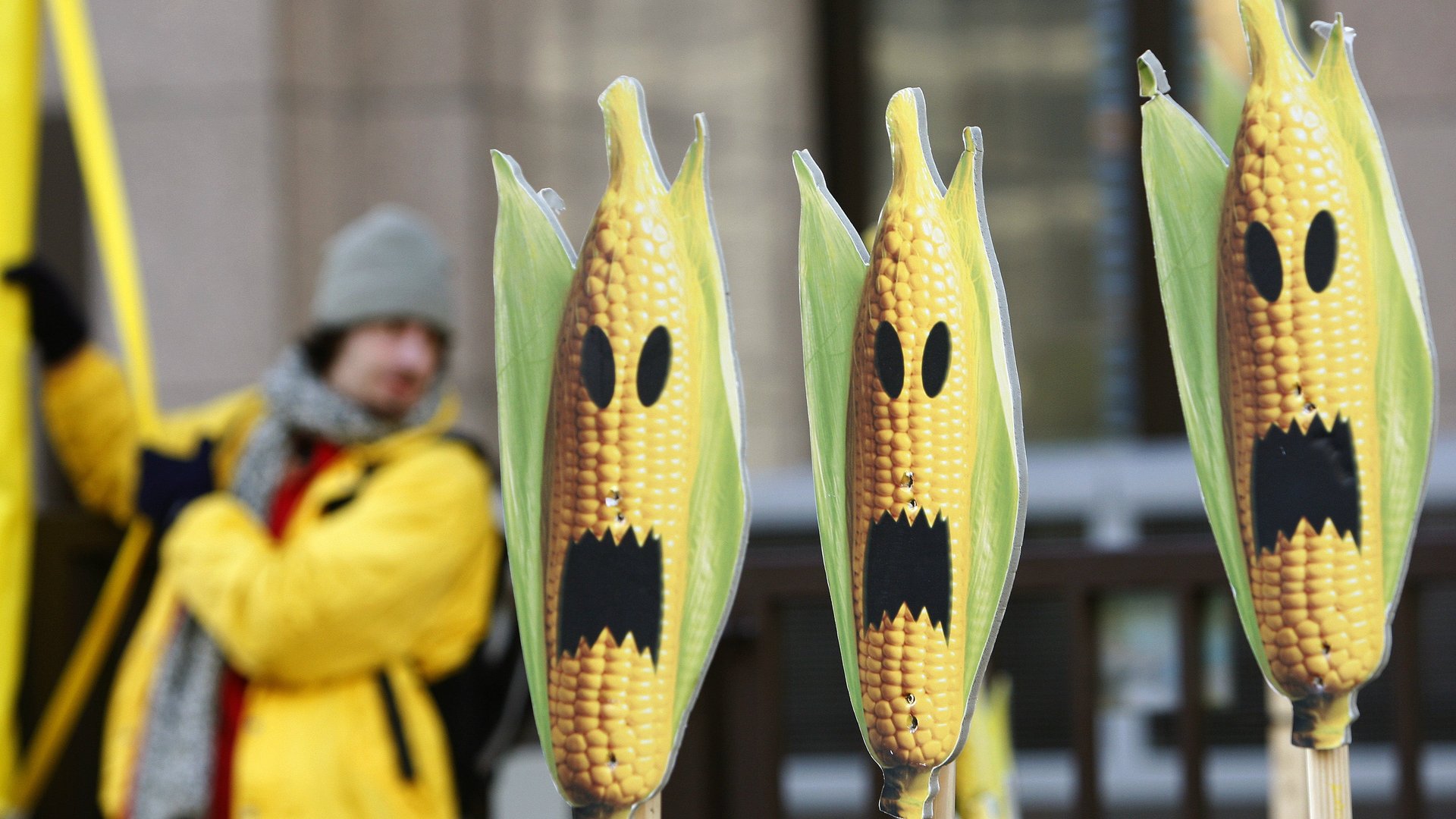Politics is foiling Monsanto’s quest to grow GMO corn in Mexico
The US chemical company, Monsanto, has long wanted to grow corn in Mexico, the birthplace of maize and its many permutations in tortillas, tamales and tacos. But that opportunity may be slipping away thanks, in part, to a new US president who seems to believe his country can build a wall around global trade.


The US chemical company, Monsanto, has long wanted to grow corn in Mexico, the birthplace of maize and its many permutations in tortillas, tamales and tacos. But that opportunity may be slipping away thanks, in part, to a new US president who seems to believe his country can build a wall around global trade.
A Mexican court has stopped pilot projects involving the planting of the genetically modified (GMO) corn Monsanto wants to grow due to concerns over how GMO corn could affect the environment. The US company has been waiting for more than two years to get approval from the Mexican government to grow its GMO corn in Sinaloa, a state in northwest Mexico. The company’s corn aspirations may also be caught in the crosshairs of US president Donald Trump’s threats to renegotiate the North American Free Trade Agreement (NAFTA).
While the Aztecs developed it thousands of years ago, the US today is the biggest global exporter of corn, with the value of exports topping $8 billion in 2015. Mexico alone imported $2.3 billion of that US corn, much of it genetically modified, according to the US Department of Agriculture. That trade relationship could change drastically, though, if the Americans decide to retool NAFTA.
Mexico didn’t always import so much corn from its northern neighbor. Consumption of US corn in Mexico increased after 1994 as a result of NAFTA. More than 2 million Mexican farming jobs evaporated as the country began importing more US corn. Between 1994 and 2011, Mexican consumption of American corn increased from 7% to 34%, according to media reports.
The Mexican agricultural sector produces enough white corn for the country, the varietal that people generally eat. It relies on the US for much of its GMO yellow corn, which is used in animal feed. If the country has to turn to Brazil or Argentina for its corn, that would reshape the economics of corn across the Western Hemisphere—having an acute effect on consumers and producers.